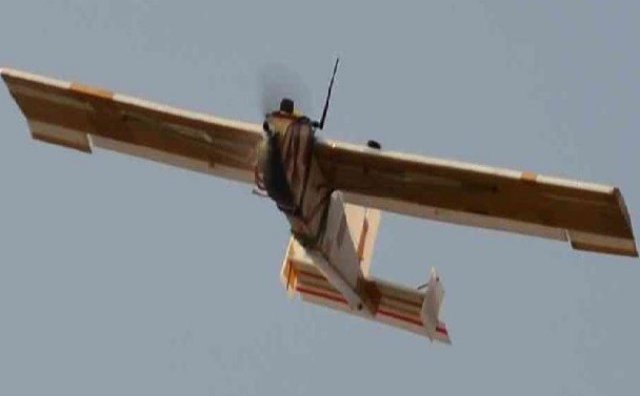A 21-year-old computer science student in India has come up with a design for an unmanned bomber aircraft made of scrap metal and costing £400. The unmanned aircraft cost Subhanjan Saha about £610 (60,000 Indian rupees) and he is hoping the Indian army will buy his design.
The cost of the aircraft will fall to £400 for bulk orders, said Saha. The battery-operated UAS, codenamed Safety Aircraft for India (SAFI), can fly at an altitude of 5,000 to 10,000 feet and has a range of 10km.The prototype is capable of dropping bombs and launching rockets. But Saha admits that the machine’s operational effectiveness needs to be improved. The inexpensive materials used in the aircraft could also be replaced with more advanced ones, he adds.
It carries high-resolution cameras that could relay live pictures to an operations centre. When asked if he is familiar with existing UAS technologies, he said: “Although I don’t know the exact details of all the UAS across the world, I’m familiar with the mechanisms. In fact, I didn’t know what I was making was a UAS until I made it.”
Saha is studying at Manindra Chandra College in the Indian state of West Bengal.
The project has been funded by the NGO Prantakatha. Speaking to IBTimes UK about the project, Bappaditya Mukherjee, the founder of the organisation, said: “We have been supporting young Indians to involve themselves in such projects which are helpful in nation-building. We decided to support Saha’s initiative because of his keen involvement in the project despite his lack of expertise in aeronautics.”
When asked about his expectations from the government, Mukherjee said he did not have high hopes as there are several restrictions to prevent the administration from carrying forward the project.
Saha has asked India’s Defence Research and Development Organisation (DRDO) to take a look at the prototype. He hopes the aerial vehicle will be useful given increasing tension in India’s border regions with Pakistan and China.
Officials at the DRDO could not be reached for comment.
In order to prevent interception of the pictures taken by the UAS, the young Indian student is also working on anti-hacking technology.
Source: International Business Times


Is this a joke?